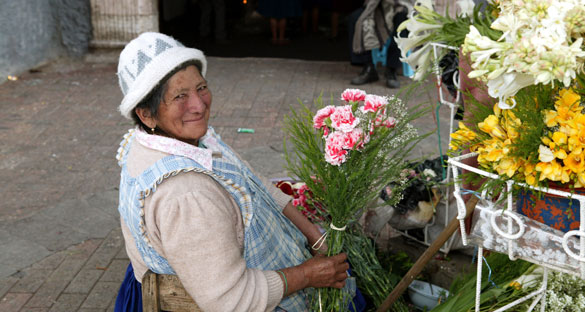52 per cent of older persons receive a pension, but levels are inadequate and the trend has been worsened by fiscal consolidation, ILO report says.
“These adjustments are undermining the adequacy of pension and welfare systems and reducing their ability to prevent poverty in old age,” said Ortiz.
“The long-term liabilities of austerity take time to show up. Depressed household income levels are leading to lower domestic consumption and slowing down economic recovery. It is alarming that future pensioners will receive lower pensions in at least 14 European countries by 2050,” she added.
Social protection as growth strategy
Ortiz explained that the positive impacts of social protection on both social and economic development, for example through boosting consumer spending and promoting more inclusive economic growth, have put social protection at the forefront of the development agenda. Many middle-income countries are enlarging social protection as part of their strategy to drive economic growth.
“China, for example, has achieved nearly universal coverage of pensions and increased wages,” Ortiz said.“
World Social Protection Report 2014-15 | ILO
Some countries, including Argentina, Bolivia, Chile, Hungary, Kazakhstan and Poland, are reversing the earlier privatization of their pension systems of the 1980s and 1990s because they were too expensive and did not expand pension coverage.
The full or partial renationalization of these pension schemes aims to reduce the fiscal costs, to improve pension coverage and old-age income security.
“Public social security systems with strong social protection floors are essential for economic recovery, inclusive development and social justice, and therefore must be an integral part of the post-2015 development agenda,” said Ortiz.
“Social protection in old age is a human right backed by international labour standards. It also makes good economic sense.”
The ILO promotes policies and provides assistance to its member states to help extend adequate levels of social protection to all members of society, including older persons.
The ILO Social Protection Floors Recommendation, 2012 (No. 202), which calls for the extension of social protection coverage, following the principles of universality of coverage, non-discrimination and gender equality, was adopted by 185 countries and further endorsed by G20 leaders and the United Nations. (*Source: ILO News).
—–
Read also:
Elderly Women, Victims of Sexual Violence, Property Grabbing, Torture
Elderly Persons, Vulnerable to Physical, Psychological and Financial Abuse, Everywhere
Grandmothers Raped in Front of Their Grandchildren; Children in Front of Their Parents
More Elderly Than Children … Within Just Five Years
Over 65 percent of Asia’s Elderly Population Will Be Women
World’s Elderly Face Abuse, Stigmatization and Violence
Bangladesh: Old, Unprotected, and Alone
2014 Human Wrongs Watch











